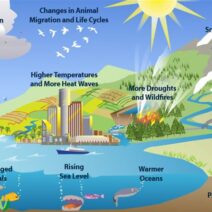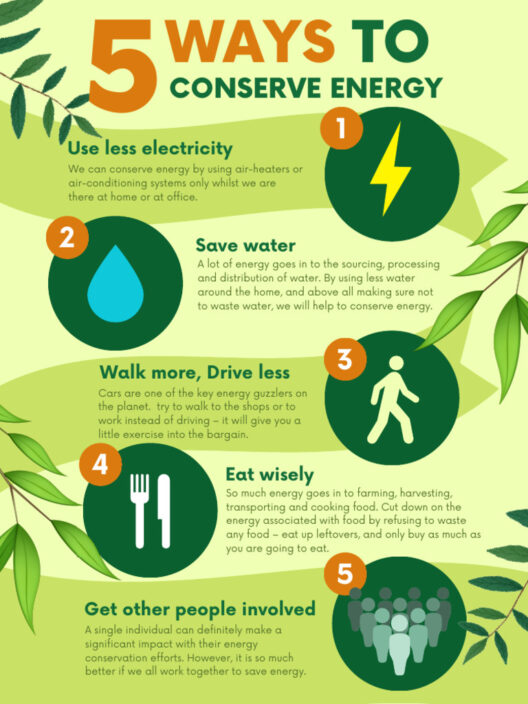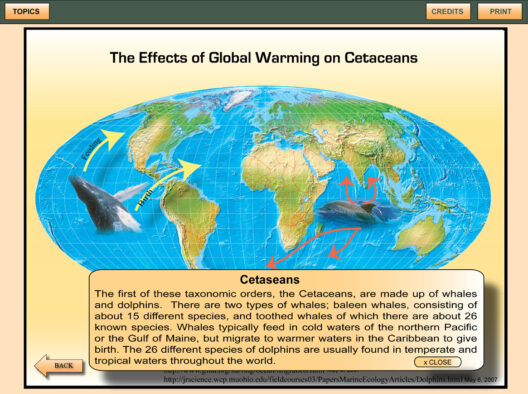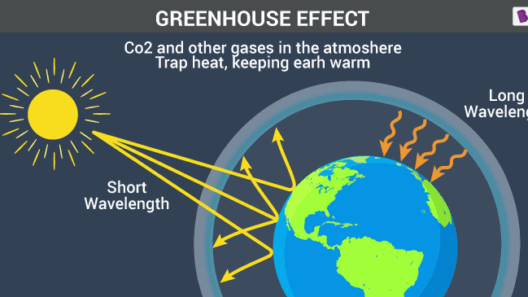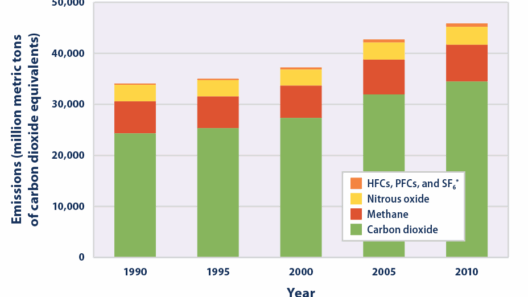The greenhouse effect is pivotal in understanding the intricate dynamics of Earth’s climate system. It refers to the natural process by which certain gases in the atmosphere trap heat from the sun, creating a warm environment that supports life. However, an unprecedented surge in anthropogenic, or human-induced, activities has markedly intensified this phenomenon, leading to global warming. Identifying the leading causes of the greenhouse effect requires a discerning eye, as we unravel the complexities of modern environmental challenges.
The primary culprits behind the enhanced greenhouse effect are a mix of industrial emissions, agricultural practices, land-use changes, and waste management. These factors synergistically contribute to the accumulation of greenhouse gases (GHGs) like carbon dioxide (CO2), methane (CH4), and nitrous oxide (N2O), creating an escalating cycle of warming.
To comprehend how these elements interlace, one must delve deeper into each contributing factor, examining their sources, effects, and potential solutions.
The Rise of Carbon Dioxide: Fossil Fuels and Deforestation
Carbon dioxide is the most prevalent GHG, and its presence is substantially heightened by our reliance on fossil fuels, which include coal, oil, and natural gas. When burned for energy production, transportation, and industrial processes, these fuels release vast quantities of CO2 into the atmosphere. In the 21st century, the insatiable demand for energy has led to unprecedented fossil fuel extraction, which has been further exacerbated by population growth and urbanization.
Moreover, deforestation significantly contributes to the imbalance. Trees act as natural carbon sinks, absorbing CO2 and releasing oxygen. However, widespread logging and land clearing for agriculture and infrastructure development have diminished forest cover. In essence, not only are we augmenting CO2 emissions through fossil fuel combustion, but we are also stripping away the Earth’s ability to sequester this gas.
The Impacts of Agriculture: Methane and Nitrous Oxide
In the agriculture sector, particularly livestock farming and rice cultivation, methane emissions pose a considerable threat. Methane is produced during the digestive processes of ruminant animals, where it is released into the atmosphere through belching. Additionally, anaerobic decomposition of organic matter in rice paddies generates significant quantities of methane. This gas is approximately 25 times more effective than CO2 at trapping heat over a 100-year period, making its implications dire.
Nitrous oxide, often overlooked, emerges predominantly from fertilization practices. The intense application of synthetic fertilizers, aimed at maximizing crop yield, leads to leaching and runoff. When nitrogen compounds are subjected to certain conditions, they produce nitrous oxide, another potent GHG that can be 298 times more effective than CO2 over a century.
Technological advancements and innovative practices, such as precision agriculture and anaerobic digesters, offer pathways to mitigate these emissions. However, widespread implementation and commitment remain crucial to altering these detrimental practices.
Land-Use Changes: Urbanization and Habitat Alteration
The shift towards urban ecosystems cannot be understated in this discussion. Rapid industrialization and urban sprawl often encroach upon vital carbon reservoirs, such as wetlands and forests, leading to significant habitat destruction. Urban areas create heat islands, exacerbating local climates and increasing energy demand for cooling. This urban heat effect can further aggravate the greenhouse effect, showcasing the interlinkages between human activity and environmental response.
Through sustainable urban planning and rewilding initiatives, there exists potential for reclaiming lost biodiversity and restoring ecosystem services. These strategies not only help in reducing net emissions but also promote resilience against climate perturbations.
The Waste Conundrum: Landfills and Land Use
The management of waste is yet another critical area influencing the greenhouse effect. Organic waste decomposition in landfills generates methane, as anaerobic conditions prevail. The underestimation of this issue in urban waste management practices leads to an overlooked source of GHG emissions. Though recycling and composting efforts have been gaining traction, significant gaps in infrastructure and public awareness persist.
Additionally, improperly managed waste can lead to leachate, contaminating groundwater and releasing potent GHGs into the environment. A holistic approach to waste management that prioritizes reduction, reuse, and recycling can serve as a critical lever in combating climate change.
Transformative Solutions: Policy, Innovation, and Individual Action
Addressing the primary causes of the greenhouse effect demands a multifaceted approach involving policy reform, technological innovation, and grassroots movements. Policymakers must implement stringent regulations to limit GHG emissions across all sectors, incentivizing renewable energy sources and sustainable practices. Transitioning away from fossil fuels towards solar, wind, and hydroelectric power represents an essential way to curb emissions.
Simultaneously, technological advancements can pave the way for more efficient agricultural practices that reduce methane and nitrous oxide emissions. Solutions like biogas production, agroforestry, and soil health management can drastically enhance sustainability in food production.
Empowering individuals to make conscious lifestyle choices can also drive change at the grassroots level. Encouraging the reduction of meat consumption, advocating for carbon footprints, and promoting local food systems aligns daily actions with the broader goal of climate mitigation.
In conclusion, the pursuit of understanding the main causes of the greenhouse effect reveals a complex interplay of human activities. By illuminating the intricate relationships between industrialization, agriculture, land use, and waste management, we can foster a deeper appreciation for our role in this environmental crisis. Collective awareness and action can lead to transformative changes, ultimately rewriting the narrative of climate change towards a more sustainable and resilient future.


